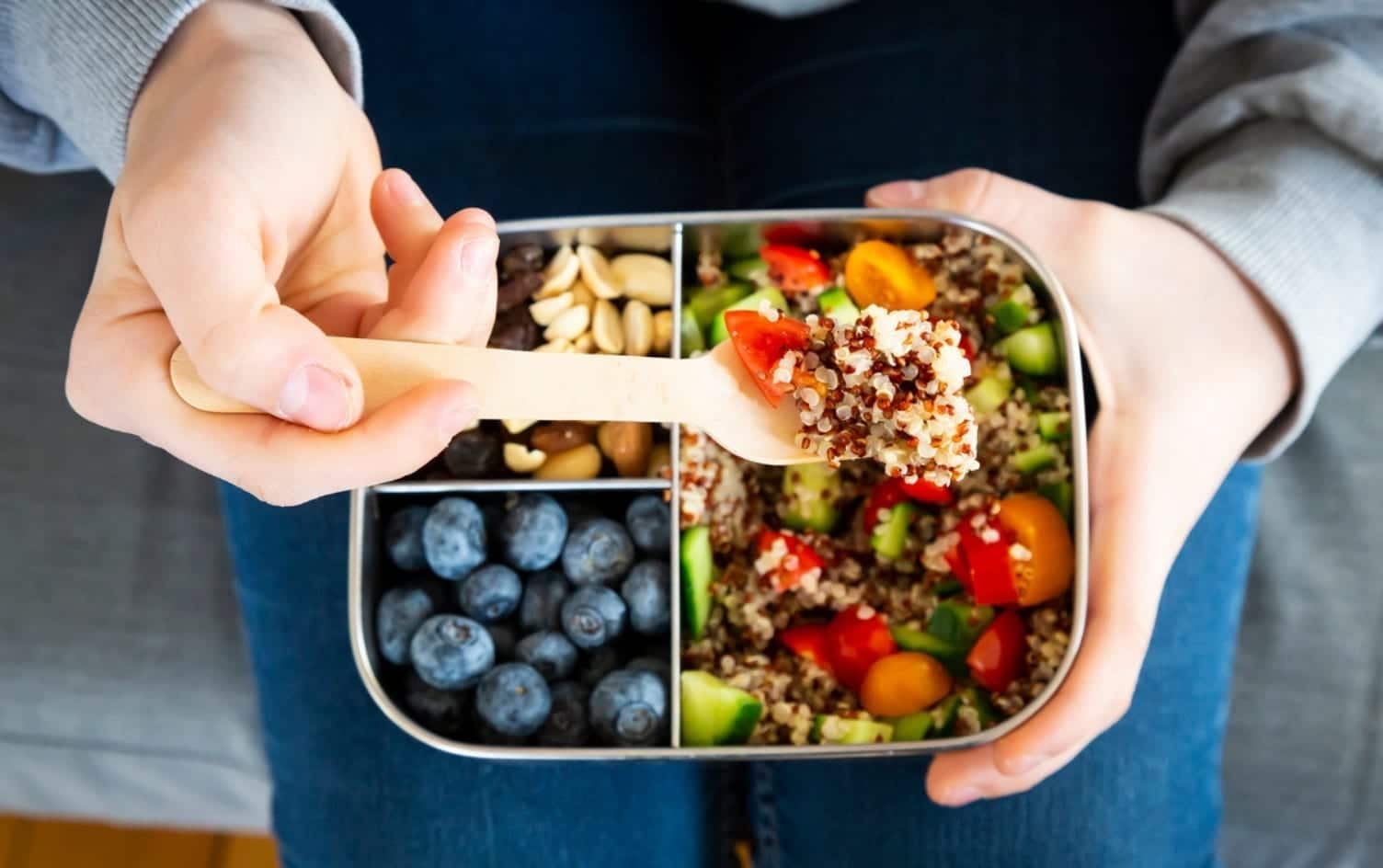Many people begin their fat-loss journey by cutting calories. This is a tried-and-true fat-loss tactic research shows is more effective than relying on exercise alone.
However, many people cut calories so dramatically they feel hungry all the time. Not only is this unpleasant, but it won’t actually help you lose fat. Your best bet for fat-loss success is to create a modest caloric deficit, and make smart food choices so you feel satisfied — not starved.
WHY YOU SHOULDN’T CUT CALORIES TOO LOW
Though you may think cutting tons of calories automatically speeds fat loss, it actually works against you over the long-term: “It’s going to slow the metabolism and cause the body to not want to let go of fat stores because it believes it’s in a ‘starvation state,’” says Ginger Hultin, MS, a Seattle-based registered dietitian and spokesperson for the Academy of Nutrition and Dietetics.
Plus, it’s hard to maintain a severe caloric deficit. When your body doesn’t get the energy it needs to function, it spikes your hunger hormones, causing you to seek food. “You could end up gaining weight in the end, ironically,” Hultin says.
HOW MANY CALORIES SHOULD YOU CUT FOR FAT LOSS?
It’s not uncommon for nutrition experts to recommend cutting 500 calories per day if your goal is fat loss. According to this line of thinking, cutting 500 calories per day equals a 1-pound loss per week, which is considered a safe, healthy and realistic amount.
However, Hultin recommends taking a more individual approach: Get an idea of how many calories you’re currently eating, and how many calories you actually need. A registered dietitian can help you here, but you can also experiment on your own using an app like MyFitnessPal.
First, track your food for a week or two with the MyFitnessPal calorie counter to see how much you’re really eating. This helps you identify areas where you might be able to cut excess foods and drinks or sources of sneaky calories.
Calorie-tracking apps also give you an idea of how many calories you should be eating for fat loss so you can see how your actual intake measures against your target intake.
In general, Alix Turoff, RDN, nutrition consultant and owner of Alix Turoff Nutrition in New York City recommends starting with a 15–20% deficit. “That means if your maintenance calories are 2,000 calories per day, your deficit would be 300–400 calories,” she says. Note: “Maintenance calories” refers to the amount of calories you need per day just to maintain your current weight. You can get this number from MyFitnessPal or by entering your height, weight and current activity level into this interactive calculator from the United States Department of Agriculture (USDA).
“If you start with the 15–20% deficit and you’re not seeing results after four weeks, you can decrease your calories by [another] 100 calories per day,” Turoff says.
However, keep in mind your daily calorie needs change as you lose weight. Turoff recommends recalculating your calorie requirements every time you lose 10–15 pounds.
3 TIPS FOR CUTTING CALORIES WITHOUT STARVING
While it’s normal to feel a little hungry when you start cutting calories, you shouldn’t feel hungry all the time — much less starving. “As a dietitian, if I hear a client is feeling really hungry, that’s a red flag for me,” Hultin says.
Here are a few expert tips for cutting calories the smart way:
CUT GARBAGE CALORIES
Start by cutting foods that don’t offer any nutritional benefits. Alcohol, candy, soda, junk food and baked goods are just a handful of obvious foods to look at cutting.
Limiting processed foods could be just the thing you need to nudge the scale in the right direction: A recent small-scale study published in Cell Metabolism found that people ate about 500 calories more per day on a heavily processed diet than they did on a minimally processed diet. On average, people gained 2 pounds in two weeks on the processed diet, and lost the equivalent amount after two weeks on the minimally processed diet. See if you can eliminate or reduce any processed foods from your diet.
If the thought of giving up all your favorite junk foods is overwhelming, remember you don’t necessarily have to cut them out entirely or all at once. “Of course there’s room for all foods in the diet, but sometimes there’s an obvious place to reduce in your diet as you work toward your health goals,” Hultin says.
USE VEGGIES TO FILL GAPS
You may be cutting back on certain foods (i.e., pasta, bread), but this doesn’t mean you’re doomed to eat tiny meals. Turoff recommends using vegetables — which are loaded with stomach-satisfying fiber and helpful nutrients — to add volume back to your plate.
For example, if you’re used to eating two servings of pasta at dinner, decrease that to one serving and cook some zucchini noodles or spaghetti squash to make up for the missing serving. “That way, the volume of food is still there, but the overall calorie density of the meal is less,” Turoff explains.
SWAP LOW-FIBER FOODS FOR HIGH-FIBER
Foods that are high in fiber (e.g., apples, barley, green beans, cauliflower, oats) tend to be more filling, less energy dense (i.e., fewer calories for the same volume of food), and digest more slowly than low-fiber foods. This means you’ll likely eat less and stay full longer, which can help you lose weight over time. In fact, research in Annals of Internal Medicine reveals simply boosting your daily fiber intake may be an effective weight-loss strategy — especially if you have a hard time adhering to more complicated diet regimens.
Plus, research shows only 5% of the U.S. population currently meets daily fiber recommendations (between 19–38 grams per day), and that our low fiber consumption is a public health concern. Authors recommend checking food labels regularly to ensure you’re reaching for fiber-rich foods.




